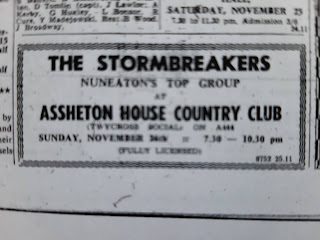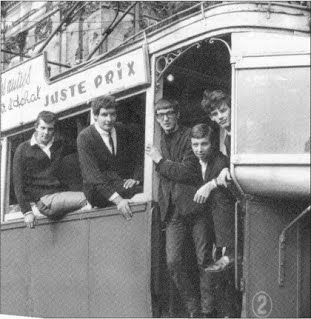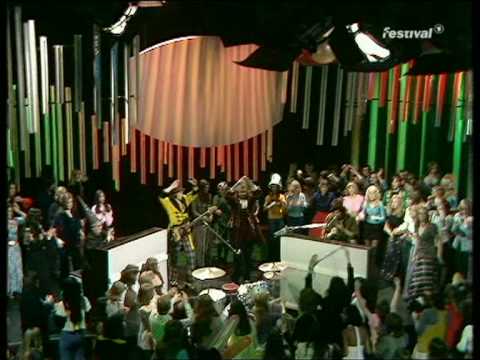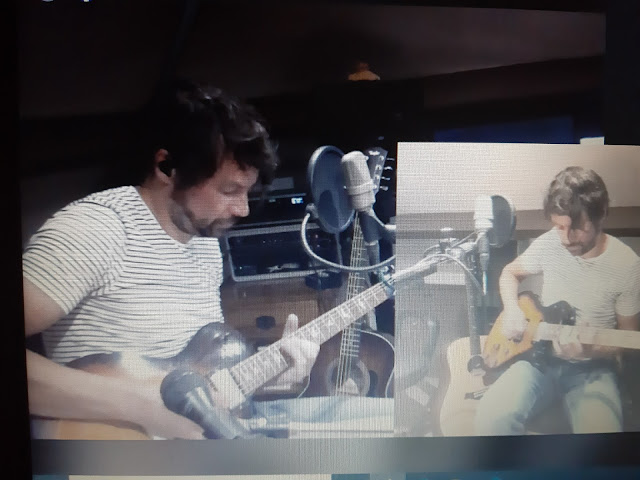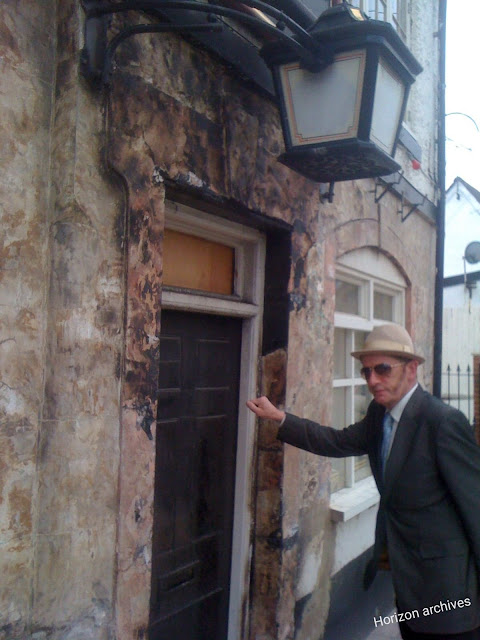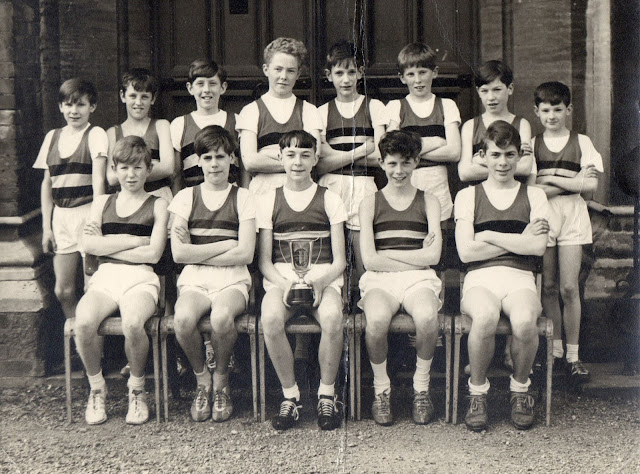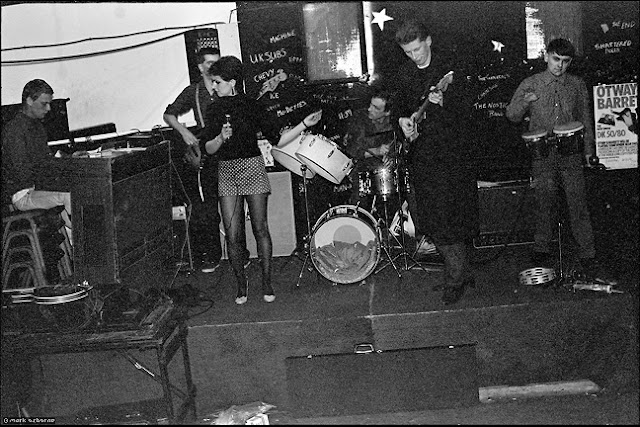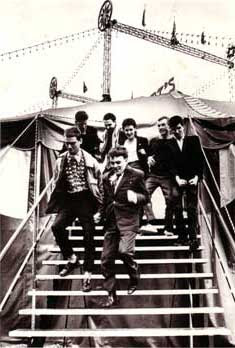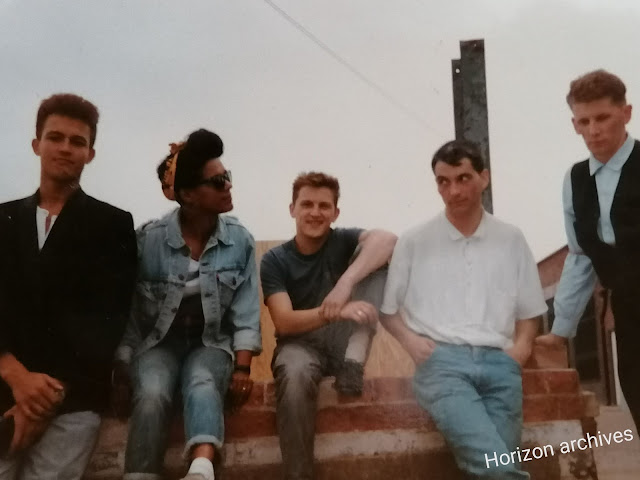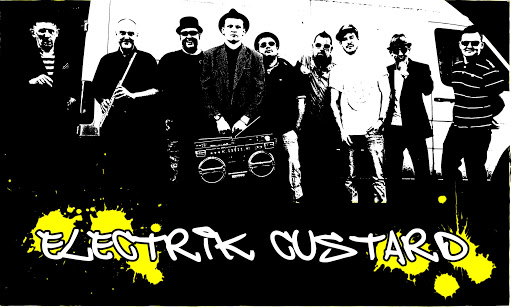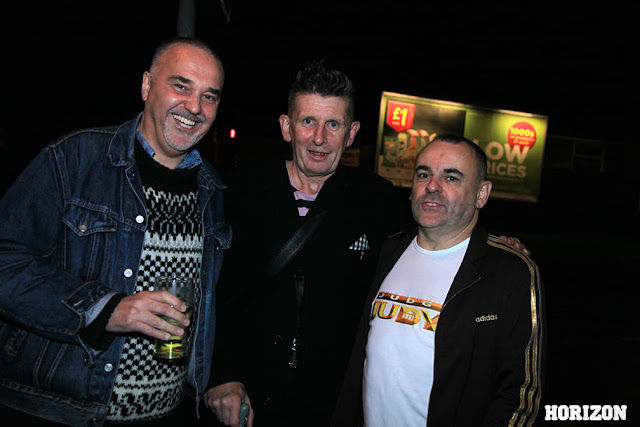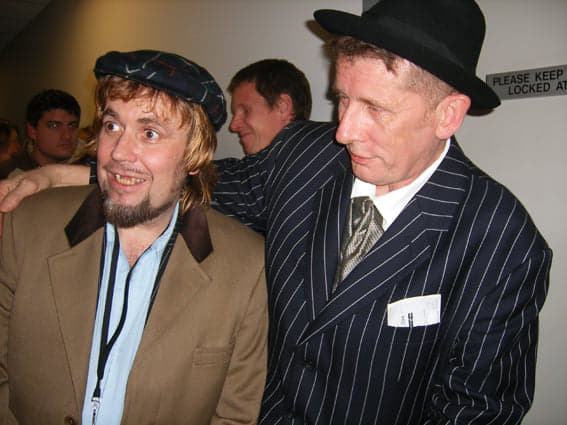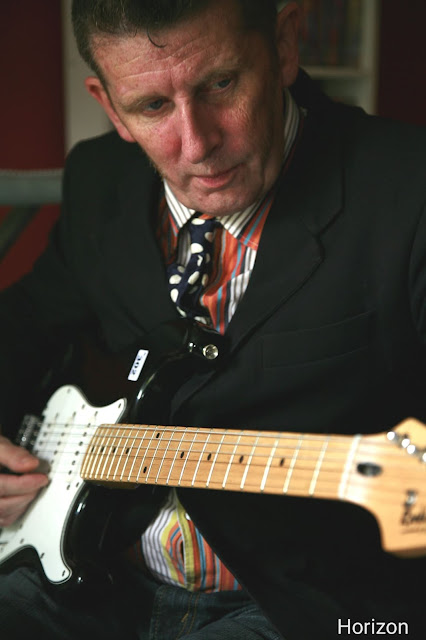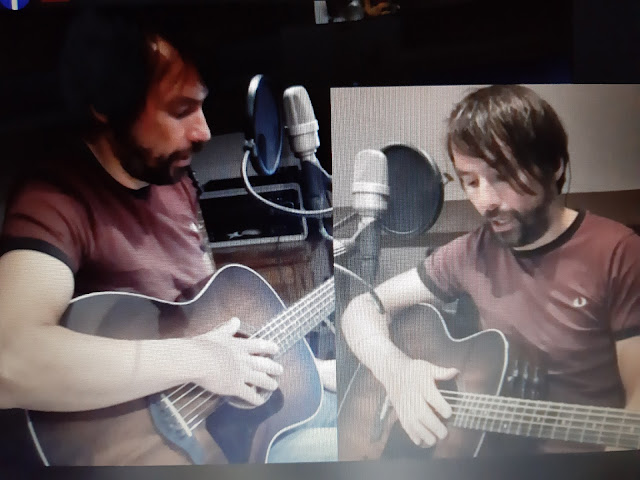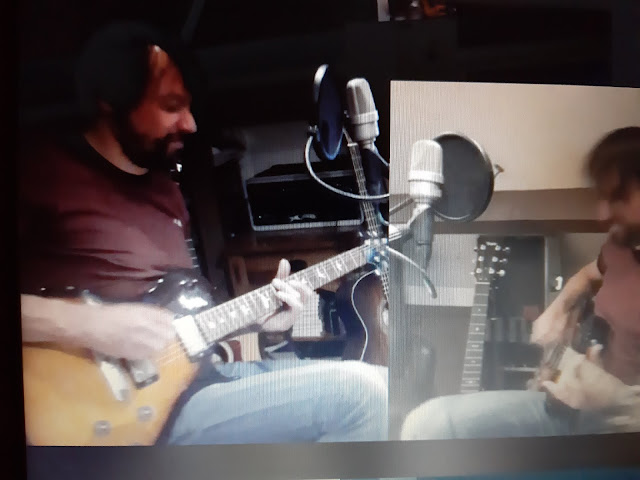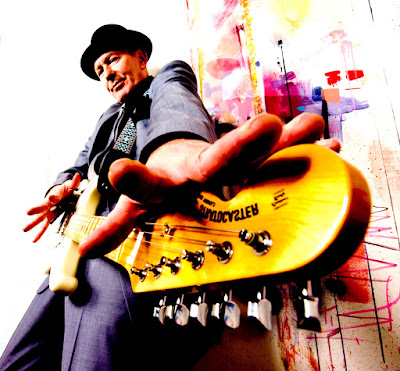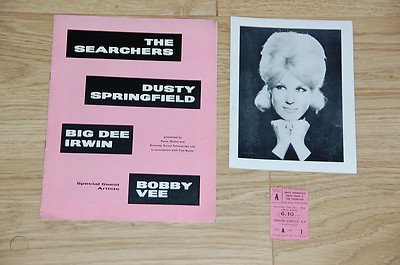David Owen was well known and well liked as one of the top agents in Coventry. He also owned the ‘Lunchbox’ a local restaurant and nightspot, above the shops near the Forum on the Walsgrave Road. Whenever I saw him he was always friendly but very much the businessman. He always seemed to be on the phone, talking about groups, bookings and music generally.
David was always very encouraging to the groups that he managed. He would never fail to mention the ‘Sorrows’ and the ‘Matadors’ at every opportunity. As a drummer I was always in awe of Harry Heppenstall the drummer with the Matadors, whenever I watched them.
The Sorrows big hit ‘Take A Heart’ was also a great inspiration to all of us. Tony Fennell’s haunting ‘paradiddle’ makes it an unforgettable song. He was actually a session drummer by then, having started the ‘Mustangs’ a few years before. They backed Coventry singer ‘Lynne Curtis’. Don Fardon ex singer with the Sorrows also sat in on a gig with us once at Broad Street Old Boys Rugby Club. That was a great night. He was an imposing presence and a great singer. He really got the crowd going, a later had a hit with his song ‘Indian Reservation’.
One particular meeting with David did stick in my mind though.
We were called to his office one afternoon, which was above a newsagent’s shop, opposite the GEC works in the Stoke area of Coventry. He was considering us for some work in Germany as a backing group for another of his acts. This was a great opportunity so we were all very excited. I was just seventeen at the time and still at school. I did have some worries about getting a work permit for Germany, as the minimum age at the time was 18 years. The last thing I wanted was to stop the group from taking, what could have been our first big break. Unfortunately we didn’t get the job in the end, as the booking fell through. This was an early disappointment, which we found difficult to deal with at the time.
David had a lot of connections in the music business especially around Coventry and Birmingham. We travelled all over the City and to gigs further afield. The ‘Co-op Ballroom’ in Nuneaton and ‘The George’ in Hinckley, ‘The Cedar Room’, ‘ The Elbow Room’ and the Mackadown in Birmingham were all on the circuit for Coventry based groups. The ‘Carlton Ballroom’ in Erdington, which later became ‘Mothers’ was another great place to play.
All-nighters began taking off in the Midlands, at venues where promoters were able to obtain a licence. I remember we played the ‘Chateau Impney’ just outside Droitwich for one of their Friday all-nighters, with Birmingham reggae group ‘Locomotive’, who later had a hit with ‘Rudi’s In Love’. I still remember playing drums behind our group, while the crowd were dancing. As dawn started to break I saw the sunlight just starting to come up over the stage and I thought ‘I’m so lucky to be here and to be able to do this’.
Roger Williamson, who would later form Eastlight, was the bass player when I joined the ‘Nite Train’ in 1964. We were actually a three piece, with Terry on Lead Guitar and Vocals, Roger on Bass and me on Drums, Jim Lang had already left to join one of the Irish show bands by then. Show Bands were becoming popular in Coventry at that time. This was before his days as tenor sax player with the great ‘Ray King Soul Band’.
I remember our repertoire was mainly R & B numbers, including ‘Walking the Dog’, ‘Jump back, ‘Gloria’, ‘Kansas City’ and Mose Allison’s ‘ Parchman Farm’ etc. We did get some good gigs though back in the day. The Chesford Grange near Leamington had two stages down in the basement, with a ballroom for dancing upstairs. On Saturday nights they had a full band in the ballroom and usually two groups on in the cellar downstairs. By ten o’clock the place was usually heaving. We also had a residency at the Avonside Country Club, just down the road, for a while as well.
In the week we used to run our own nights at the ‘Red House’ in Stoney Stanton Road’ and the ‘New Inn’ in Longford, charging about 2 shillings (10p) on the door. I remember also playing the Cedars in Coundon, where they used to pass a collection plate round to everyone in the pub to pay the group, happy days!
As well as David Owen we used to work for another agency, Friars Promotions in Albany Road, Earlsdon. Jack Hardy, who ran the business, had an answering machine in the office, which was always on. If it was a group on the phone asking for money he would let the answering machine handle the call, but if it was a pub or club with work to offer, he would rush to the phone, cut in and take the call. We did eventually get paid, but as we were only getting about £20 a gig, we weren’t doing it for the money. The Musicians Union rate at that time was only about one Guinea an hour.
We used to practice two nights a week at the ‘Holyhead Road Youth Club’ near Coventry town centre. The club had two stages, one in the basement and another in the main concert room. Any youngsters visiting the club in the evening would have the choice of two free shows, as there were usually two groups rehearsing in each space. I often used to see my cousin Dave Cooper rehearsing with his progressive folk group ‘Dando Shaft’. Dave and I had grown up together and we would often sing together and play guitar, in his bedroom at Auntie Nell’s house in Tallants Road, Bell Green.
Roger Williamson eventually left the ‘Nite Train’ to join the Darkness and then set up Folk duo ‘Eastlight’. Folk music was very popular in the sixties at that time, with lots of good venues in the City. He was a big loss to us as he was a good bass player, as well as an extremely good guitarist. Welshman Bryn Evans, who took over, also played a mean bass guitar.
We became a ‘Soul Band’ around that time as well. The line-up was eventually extended to nine, with two new sax players, Al and Trevor, and a new trumpet player Stan, who all had day jobs working for Rolls Royce at Ansty. Our Female Singer ‘Hyacinth’ also brought in two girl backing singers. Our repertoire became more James Brown and Otis Reading, with popular numbers like ‘Shake’, ‘I Feel Good’, Wilson Pickett’s ‘Midnight Hour’, Eddie Floyd’s ‘Knock on Wood’ and Gino Washington’s “Hi, hi hi, Hazel’ now on the setlist. When Terry, our lead guitarist, got hold of one of the new “Fuzz” boxes, we were able to cover some of the new Spencer Davis hits like, ‘Keep on Running’ and ‘ Somebody Help Me’, which always went down well at ‘The Racehorse’ in Warwick.
Sunday nights in Coventry were mostly very quiet. The local pubs had to close at 10.30pm as licences were not usually issued to pubs for Sunday dancing. We’d often go the Hotel Leofric Jazz club on a Sunday Night and watch the some big name bands on the small stage there in the concert room. It was mainly R and B bands in those days. I remember seeing Long John Baldry’s ‘Steam Packet’, with The Brian Auger Trinity, Julie Driscoll and a very young Rod Stewart there a few times. John Mayall’s Blues Breakers, with Mick Taylor on lead, and ‘The Graham Bond Organisation’ were some names I remember.
Rod Stewart would come on halfway through the Steam Packet’s set dressed with a look straight out of Carnaby Street. ‘Rod the Mod’ had an impressive voice, even in the early sixties. I remember him singing Marvin Gaye’s ‘ Ain’t That Peculiar’ standing right next to me at the edge of the stage.
The ‘mod’ look for us, meant ditching our drainpipe jeans, winkle-picker shoes and tea-shirts for Cuban heels, Paisley Shirts and backcombed hair.
There were so many venues in Coventry in the 1960’s where you could see and hear all kinds of music; ‘The Matrix Ballroom’ on Fletchamstead Highway was a venue that attracted a lot of major names. Just about every UK Chart Topping Group played there in the early sixties, but it also attracted some of the big American Artists as well. One such artist on tour at that time was Jerry Lee Lewis. I remember we were the first group on early in the evening, so I couldn’t use my own drum kit, something I wasn’t too happy about at the time. We did our set and when we got back to the dressing rooms behind the stage, Jerry Lee Lewis’s backing group had arrived, so we had a chance to chat with them about music. They were all pretty high, and I don’t just mean from playing music. A stark reminder that hard drugs are never very far away in the music business.
Coventry agents would work their groups quite hard in those days, and David Owen was no exception. We couldn’t stay to watch Jerry Lee Lewis, as we were back in the van and heading downtown for another show. The Lanchester Polytechnic was a popular Coventry music venue, next to the new Coventry Cathedral. It had three stages one in the Refectory on the third floor and two stages opposite each other in the main ballroom.
We were heading for the main ballroom this time, which meant we could use the big lift, next to the loading bay at the back of the college. A lift was paradise for anyone who had to carry heavy music gear up and down stairs. That night we had three heavy ‘Vox Boxes’ plus the P.A system to shift.
As we got out of the lift we could hear the first band ‘Unit 4 + 2’ coming to the end of their set. Panic began to ensue, as we needed to get everything set up before they finished, so we could keep everyone dancing. As we got onto the opposite stage they announced that they would play two more numbers. I breathed a sigh of relief and started setting up my kit.
I have great memories of the Lanchester, and have seen some great student events there. We would often go to see the energetic ‘Ray King Soul Band’ perform there. Ray was a great performer and really knew how to work a crowd. Jim Lang’s tenor sax melodies complemented Ray’s voice and we all knew they were destined for much bigger things.
We also played some gigs at the ‘Benn Memorial Hall’ in Rugby. On one occasion we were supporting ‘The Ivy League’, who had changed their name to ‘The Flower Pot Men’ in line with the ‘Flower Power’ craze that was now sweeping the nation. It was an amazing experience to listen to them singing those three part harmonies on ‘Let’s Go to San Francisco’, from the wings as they performed their set.
We went for a lot of auditions with various promoters and got some good gigs, but there were also many disappointments, along the way. We did however come second in a talent contest at the Coventry ‘Locarno’. Their revolving stage was a weird experience, as we had to start playing facing a brick wall. As we played the audience slowly came into view, by the time they could eventually see us we were halfway through our first number.
Eventually I left the ‘Nite Train’ to join Dave Pennycook and Colin Elliot in ‘Monday’s Children’, who were looking for a drummer. We went on to rock great places like ‘Smorrell Lane Social Club’ in Bedworth and the ‘Lime Tree Social Club’ in Tile Hill with ‘Small Faces’ covers.
There was no ‘Big Time’ for me I’m afraid, just a lot of very happy memories of being in a group in Coventry in the swinging sixties.
Rob Peake – June 2020




